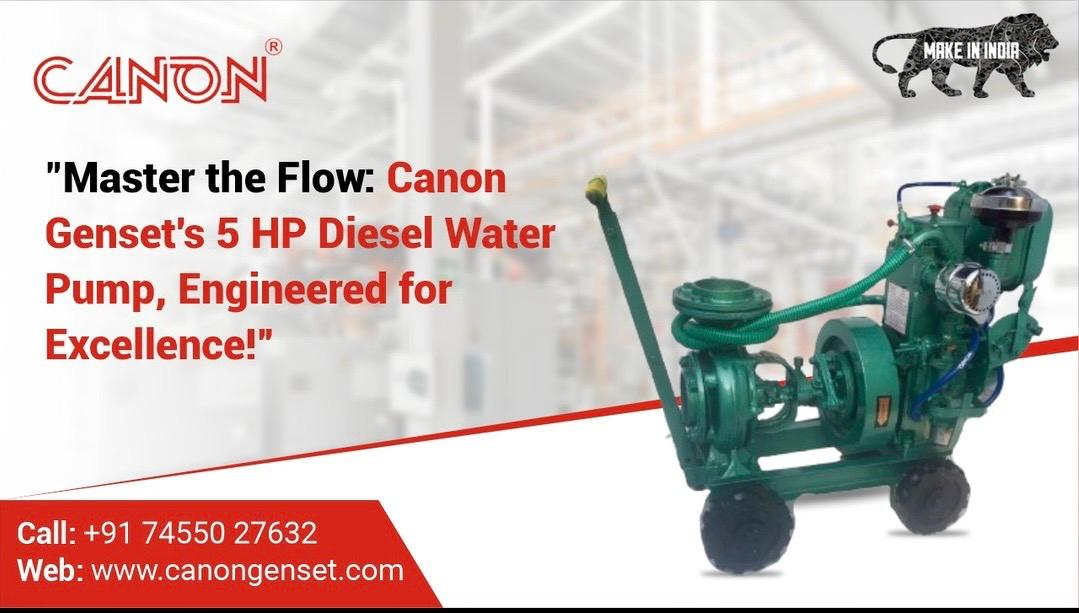Diesel-powered water pumps are invaluable machines for moving water in areas without electricity or where a high-power pump is needed. This blog will cover their uses, types, prices, and maintenance.
Price Range of Diesel-Powered Water Pumps
Diesel water pumps come in various price ranges depending on their power and features:
- Smaller, Portable Pumps (3-5 HP): Start around USD 500 / ₹35,000 INR.
- Heavyweight Pumps (Over 10 HP): Can reach several thousand dollars/lakhs of rupees.
The price depends on the pump’s flow rate, head pressure, and additional features like self-priming and electric start. Investing in a higher quality water pump with better fuel efficiency might cost more upfront but can save money over time.
Why Choose Small Diesel-Powered Water Pumps?
Small diesel-powered water pumps are powerful and portable, ideal for tasks like watering remote fields, draining flooded basements, or pressure washing decks without needing an electrical outlet. These pumps typically range from 3-5 horsepower, making them easy to move around.
Considerations When Choosing a Small Diesel Water Pump:
- Flow Rate: Determines how much water the pump can move (30-150 liters per minute).
- Head Pressure: Determines how high the pump can push water (10-30 meters).
- Portability: Consider the size and weight for easy transportation.
- Extra Features: Self-priming pumps start automatically, and electric start models offer easier operation, though these features add to the cost.
The Working Principle of Diesel-Powered Water Pumps
Diesel water pumps operate efficiently in remote locations or emergencies. Here’s how they work:
- Diesel Engine – The Powerhouse: The diesel engine burns fuel to create mechanical energy. Pistons moving within cylinders cause a crankshaft to rotate, providing the power to drive the water pump.
- Transferring Power: A coupling or belt connects the engine’s rotating crankshaft to the water pump, transferring the rotational energy from the engine to the pump shaft.
- The Heart of Water Movement: The most common design is a centrifugal pump, which uses an impeller—a spinning disc with fan-like blades enclosed within a housing.
- Creating Suction and Flow: The spinning impeller creates a low-pressure zone at the center of the pump housing, drawing water in through the inlet pipe. The impeller blades then push the water outward toward the discharge pipe.
- Delivering Water with Force: The volute casing, a spiral-shaped chamber surrounding the impeller, directs the water outwards, increasing its pressure. The pressurized water exits through the discharge pipe.
Conclusion
Diesel water pumps are essential for managing water in remote locations or high-power situations. Combining the strength of a diesel engine with efficient water movement, these pumps offer reliable and versatile solutions. Whether for small projects like watering fields or large tasks like dewatering basements, there’s a diesel water pump to fit your needs and budget. Consider factors like flow rate, head pressure, and features to select the perfect pump for your job.
FAQs
How does a diesel water pump work?
A diesel engine burns fuel to spin an impeller. This impeller acts like a fan, sucking water in and pushing it out with force at high pressure, allowing the pump to move water without electricity.
How to start a diesel engine water pump?
- Fill the fuel and check the oil.
- Prime the pump if needed (not for self-priming models).
- Turn the key to start, following glow plug instructions if your model has them.
- Let the engine warm up after starting.




Recent Comments